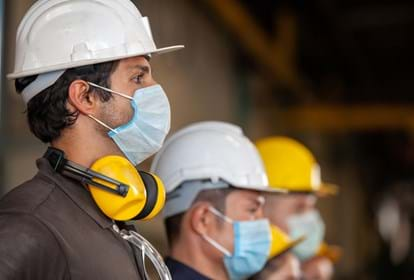Staff safety comes first, and this means following social
distancing guidance effectively.
The movement of people and flow of materials on the
factory floor will need to be reconfigured. This naturally
comes with its challenges – and requires you to be agile.
Thankfully, there are some simple measures that you can
implement now:
- Tape on floors – To mark the 2m distance
- A one-way system – So staff can’t pass each
other - Creation of a screen – To allow a team member to
safely get closer to another person - Shift pattern changes – Creating extra working
periods so that there are less staff on the factory
floor at any one time - Closure of unnecessary parts of a factory for the
time being – For instance, canteens - Extra cleaning and sanitising
- Introduction of PPE
- Removing the need to touch surfaces – The
contactless door claw can help with entering and
exiting your premises, for example.
With any measure that you introduce, it’s vital to gather data on its effectiveness and analyse it. You can then take steps to enforce and strengthen them where necessary.


